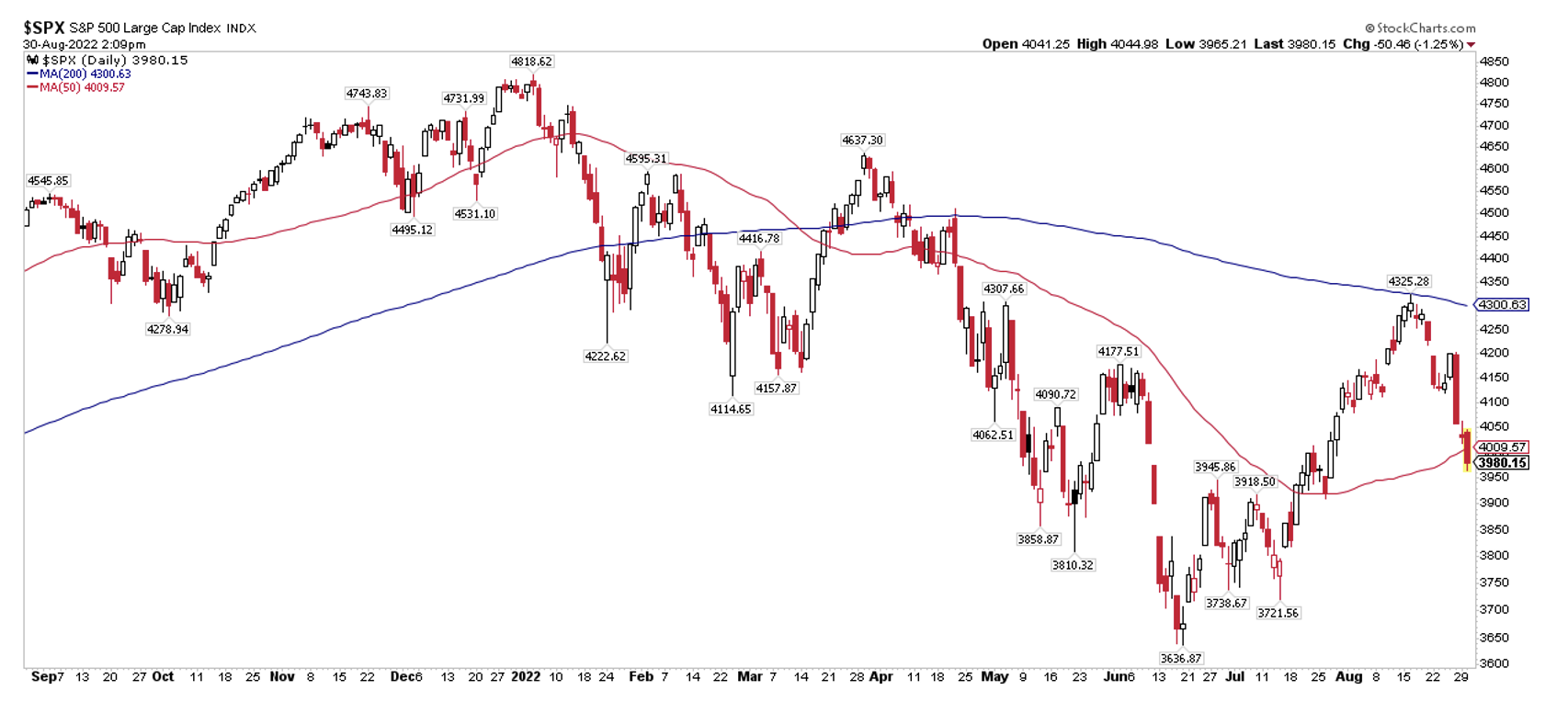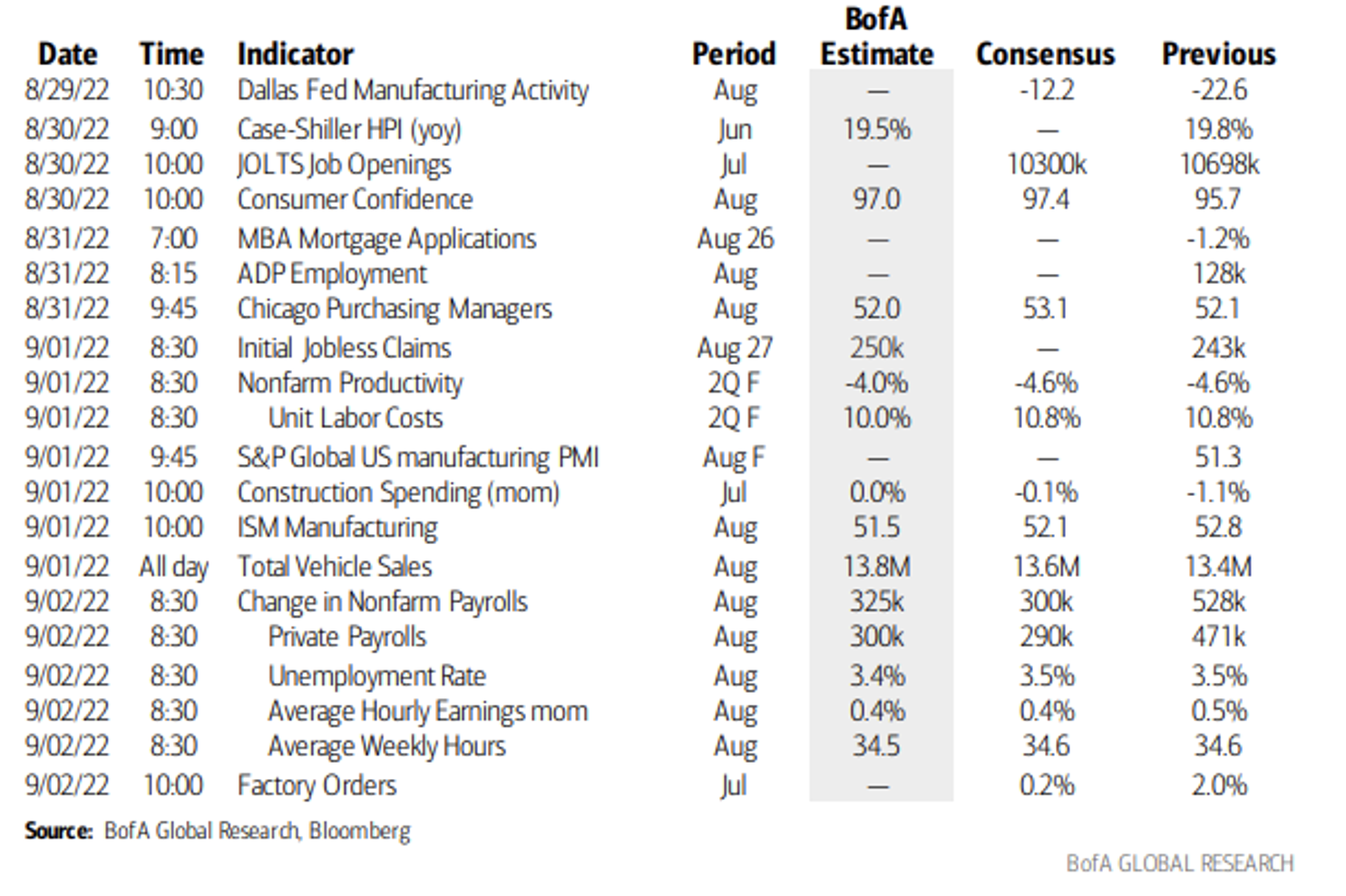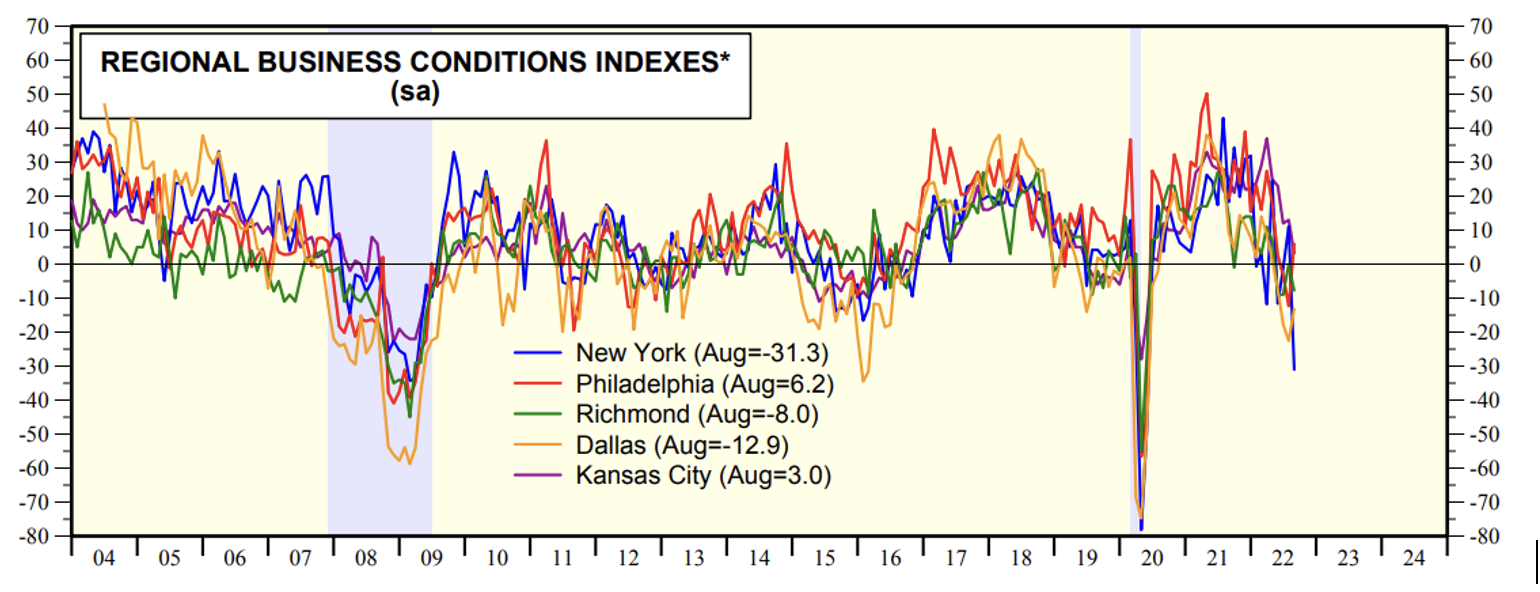Joby Aviation closes $591 million stock offering with full underwriter option
- Stocks remain in a downtrend, as evidenced by the S&P 500’s recent rejection at its 200-day moving average
- The Fed wants to see evidence of broader cooling. Thursday’s ISM Manufacturing and Friday’s employment reports are pivotal to policy
- Goldman Sachs and BofA expect robust jobs numbers, decline in unemployment rate
The markets continue trending lower after a bruising reaction to Chair Jerome Powell’s direct message last Friday. Stocks traded down to cap off last week and a further pullback off the mid-August peak. The S&P 500 climbed right to its downward-sloping 200-day moving average back on Aug. 16 only to test another key trend gauge – the 50-day moving average. After a hot JOLTS report and more optimistic consumer confidence data Tuesday morning, pressure has mounted on the Fed.
S&P 500: Declines From 200-Day Moving Average, Probing Through 50-Day

Source: Stockcharts.com
All this topsy-turvy price action comes during what is often a volatile period for equities. September is notorious for steep corrections before a seasonal late-year rally. This time, we enter this perilous stretch within a broader downtrend, which technicians can point to as a cause for concern. Will we get fundamental catalysts to drive stocks lower? That possibility is on the table with a few big economic data points about to cross the wires.
All Eyes On Thursday’s ISM Manufacturing Report, Friday’s August NFP

Source: BofA Global Research
The ISM Manufacturing report comes at 10 a.m. ET on the first business day each month. Fifty is the demarcation line between economic expansion and contraction. According to Bank of America Global Research, the consensus expectation calls for 52.1. While that suggests growth during August, it would be a drop off from July’s 52.8. Last month’s reading is particularly impactful in light of mixed regional Fed survey data lately.
Regional Economic Activity Turning South: Much To Delight Of Powell

Source: Yardeni Research
Then, on Friday, ahead of the three-day weekend, the Employment Situation report is released. Economists expect 300,000 nonfarm jobs to have been created in August, though the White House attempted to temper expectations in a statement Tuesday afternoon.
Recall about a month ago when the July NFP report revealed a whopper of an employment advance at +528,000 jobs. What will be fascinating to watch is the unemployment rate. Both BofA Global Research and Goldman Sachs Investment Research call for a drop in the headline rate from 3.5% to 3.4%. That’s not what the Fed wants to see.
Goldman Sachs: What To Expect From August Employment Report

Source: Goldman Sachs Investment Research
Digging into the details of the NFP outlook, Goldman expects a hefty private payrolls number, too. At +325,000, that would be above consensus, though still well below July’s hot number. In my opinion, the key gauge will be the earnings barometer. While Powell and the rest of the FOMC want to see the labor market cool off, they particularly want to avoid any kind of a price-wage spiral. An increase in the August JOLTS report is not a good sign on that front.
Thus, keep your eye on average hourly earnings and hours worked in the NFP data. Goldman sees month-over-month average hourly earnings verifying at +0.35%, which would be a smidgen below consensus and a decline from July’s +0.5%. The consensus expectation for hours worked is 34.6, per BofA.
The Bottom Line
Predicting major economic data is challenging. We can look for clues in stock market trends and positioning to assess how markets might react, though. Right now, stocks remain in a downtrend, but we do have a good-looking June low in place. Seasonality suggests more volatility ahead through early October with the all-important mid-term elections just on our doorstep.
Disclaimer: Mike Zaccardi does not own any of the securities mentioned in this article.
